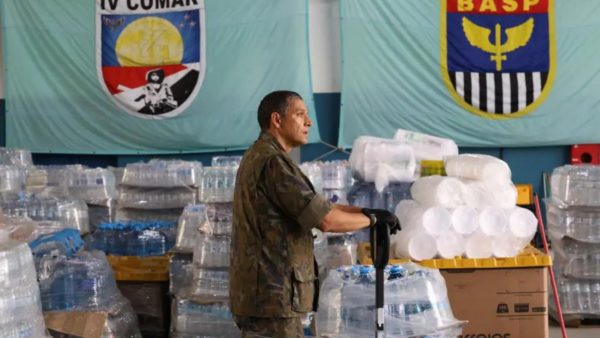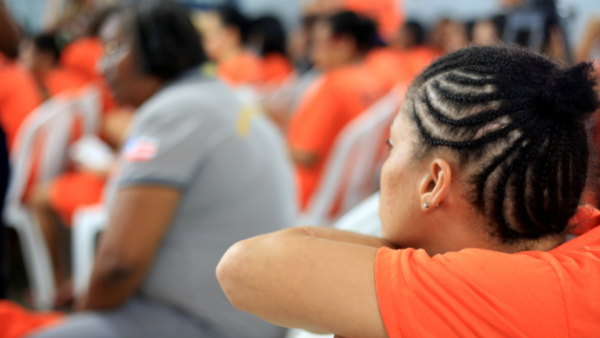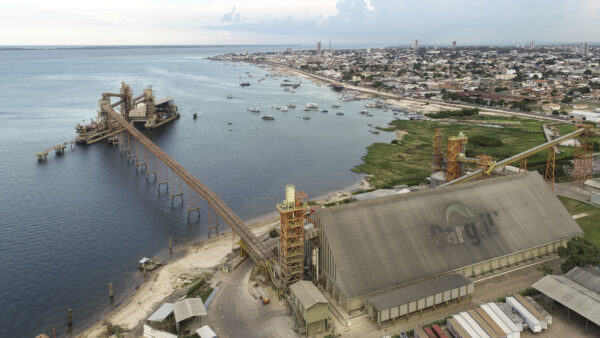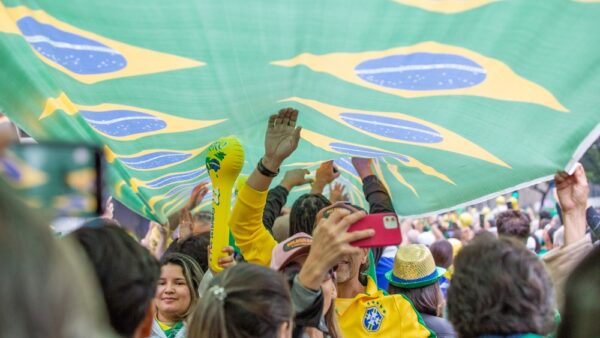Almost every non-Brazilian has heard of the country’s massive Carnival celebrations, and many may even be familiar with the São João harvest festivities that enrapture Brazil’s Northeast during the months of June and July. What’s more, plenty of foreigners know about the storied football rivalries of Flamengo and Fluminense, Grêmio and Internacional, or Palmeiras and Corinthians.
But few, if any, will have heard of the Parintins Festival, held annually in the Amazonian city of the same name, on the last weekend of June. Even so, it is one of Brazil’s biggest parties, and the stage of one of Brazil’s biggest rivalries.
The Parintins Festival revolves around the folkloric legend of the boi-bumbá, or bumba-meu-boi, and its central spectacle consists of a competition between two traditional teams, to see who can best tell the tale.
As one of the most common versions of the story goes, a pregnant northeastern slave by the name of Catirina asked her husband Chico to eat ox tongue for dinner. Following his wife’s wishes, Chico killed the most prized ox on their master’s land and was jailed as a result. The slave master, so upset at the death of his ox, calls in an indigenous priest to try and bring the beast back to life. Overwhelmed with joy at seeing his ox alive again, the slave master forgives Chico and Catirina, and the entire farm holds a party devoted to the ox.
The two teams, named Caprichoso and Garantido, each put on their own display retelling the legend, complete with elaborate dances, music, vibrant parades, and stunning costumes and floats.
The competition lasts for three nights, held in Parintins’ aptly named Bumbódromo stadium, built especially for the festival and decked out half in Caprichoso’s blue, half in Garantido’s red.
Each team has two and a half hours a night to impress the judges and audience with their storytelling, choreography, and artistic displays. Points are awarded across 21 categories, covering everything from costumes and music to the enthusiasm of each team’s supporters. This intense competition culminates in the declaration of the festival’s winner, a title that brings immense pride to the victors.

The dispute has been held every year since 1966, with the exception of a two-year hiatus during the Covid pandemic. In the all-time standings, Garantido leads the way with 32 titles over Caprichoso’s 25, but the latter goes into the 2024 competition on a two-year winning streak.
The economic significance of the Parintins Festival to the state of Amazonas cannot be overstated, and the 2024 edition is expected to surpass previous years, with up to 1,000 flights operating to and from Parintins during the festival week. This influx is anticipated to bring 120,000 tourists to the city and inject more than BRL 150 million into the local economy.
The festival creates approximately 30,000 direct and indirect jobs, benefiting various sectors including hospitality, transportation, and retail. Small businesses thrive during this period, such as local artisans, Parintins’ famous tricicleiros (tricycle taxi drivers), and food vendors. Indeed, the two competing teams Caprichoso and Garantido generate around 5,000 direct jobs alone through their year-round work building floats, making costumes, and holding rehearsals and performances.
The Ox Firm: Caprichoso v. Garantido
While the festival rivalry between Caprichoso and Garantido may sound like a playful, light-hearted jest, it is anything but. Like a deeply ingrained football derby, Parintins itself is divided along Boi-Bumbá lines, with streets, houses, and even people’s attire reflecting their allegiance to either Caprichoso or Garantido.
Garantido is seen as the more popular of the two, with its red-and-white ox representing the team of the masses. Caprichoso, on the other hand, prides itself as being the team of “innovation,” being responsible for pioneering musical and decorative transformations to the festival.
In fact, the rivalry’s influence extends to major brands, which adapt their visual identities to cater to fans of Caprichoso and Garantido. The famously red cans of Coca-Cola and Brahma beer, produce special edition blue packaging for the event, strengthening their connection to the local consumers. For this year, the festival’s official airline partner Azul unveiled a plane painted half blue and half red.
Famously, the only time fans of the two teams saw eye to eye was this year, during the final of the most recent edition of reality show Big Brother Brasil. Viewers from the entire North region, including both Caprichoso and Garantido, rallied behind contestant Isabelle Dias, a dancer for Garantido since 2015, hoping she could bring the crown to Amazonas.
For the last four editions of the festival, Ms. Dias has played the role of cunhã-poranga in Garantido’s parades, a warrior character described in folklore as being the most beautiful woman in the local indigenous tribes and the rainforest’s guardian. She will take part in this year’s festival once more.
But the moment of unity between the two bitter rivals was fruitless and short-lived. Isabelle finished third in Big Brother, and the rivalry ramped up once more between Caprichoso and Garantido, set to come to a head for yet another time in the Bumbódromo at the end of June.






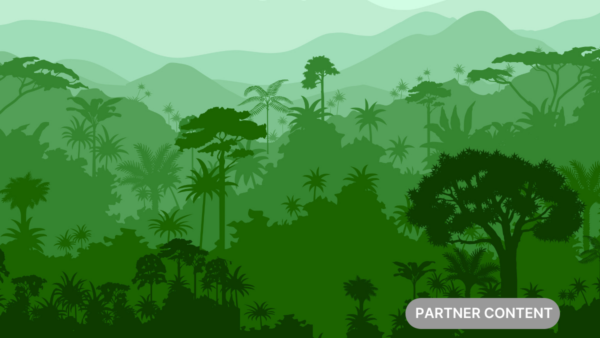




 Search
Search
